HPE just announced a new series of 3PAR midrange and high-end storage arrays prior to HPE Discover next week in Las Vegas.
The 9450 fills the gap between the 8000 and 20000 series, and the 20000 R2 platform got a performance improvement to the current 20000 models by adding better CPU’s (more cores) and more cache memory.
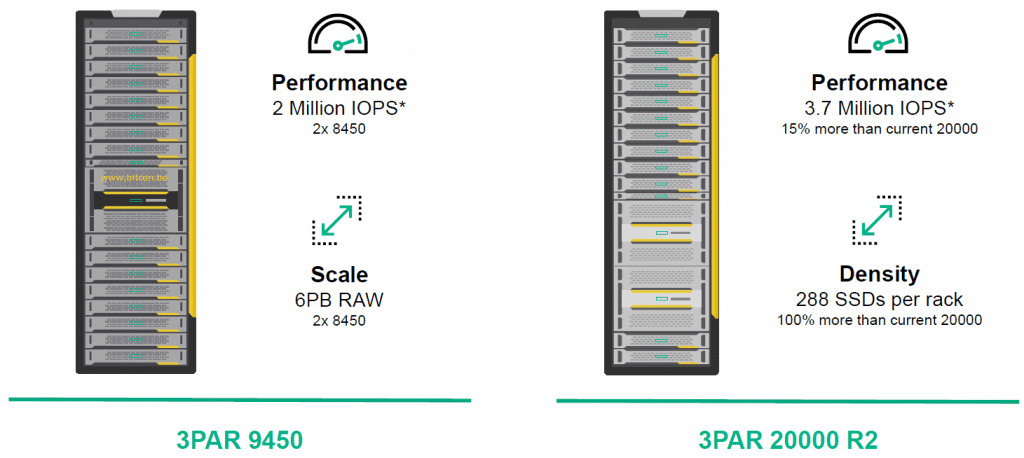
HPE 3PAR 9450
Let it be clear, the 9450 is not replacing the 8000 series models, and so becomes more the bigger (faster) brother of the 8450. It will coexist between the 8450 and 20450 AFA All-Flash arrays.
Second thing to understand that this is an array based on the current Gen5 ASIC, no new ASIC (yet). So, what is it then?
The first thing that catches your eye is the hardware itself. The 9450 is based on the hardware of the 20000 which is HPE developed and used in other HPE solutions like the StoreVirtual line… FYI the 8000 hardware is based on Xyratex hardware.
It gives the 9450 a lot of advantages:
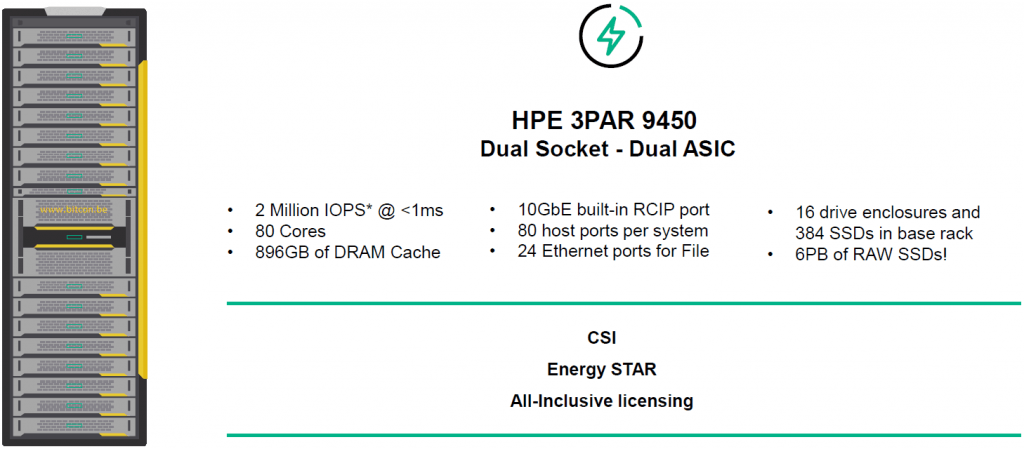
The controller shelf itself is much bigger compared to the 4U 8450 model. Which means HPE can put more CPU’s, memory and I/O cards in the system.
Every controller node pair (you can buy the system with 2 controllers or max 4 controllers) owns 2 ASICs for the data path (only 1 in the 8450), has also double Intel XEON processors for the metadata path and gets more cache per node pair. Good for double the performance compared to the 8450.
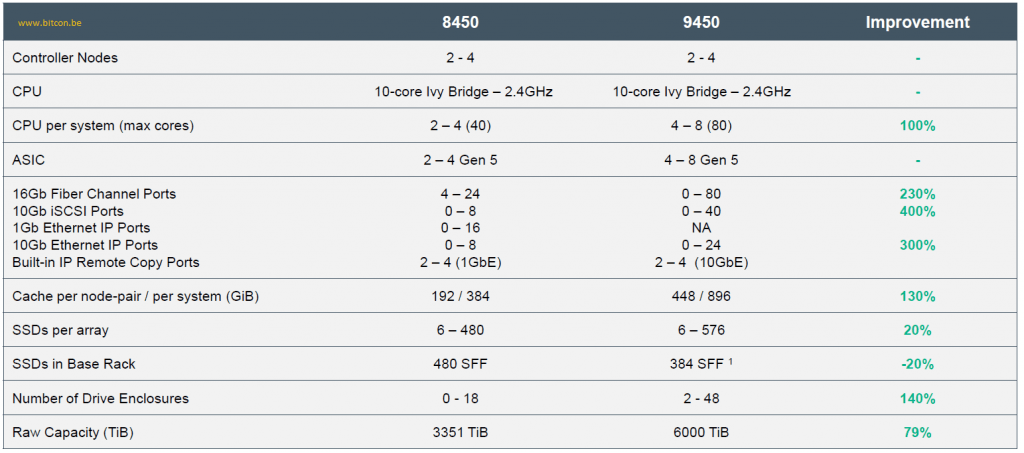
The 8000 series features only 1 PCIe slot per controller which gives limited options for expansion. Thanks to the use of the 20000 hardware, we see much more flexibility. 6 slots are available for front- and back-end connectivity, giving more drives enclosures to be connected and so more raw capacity for the system.
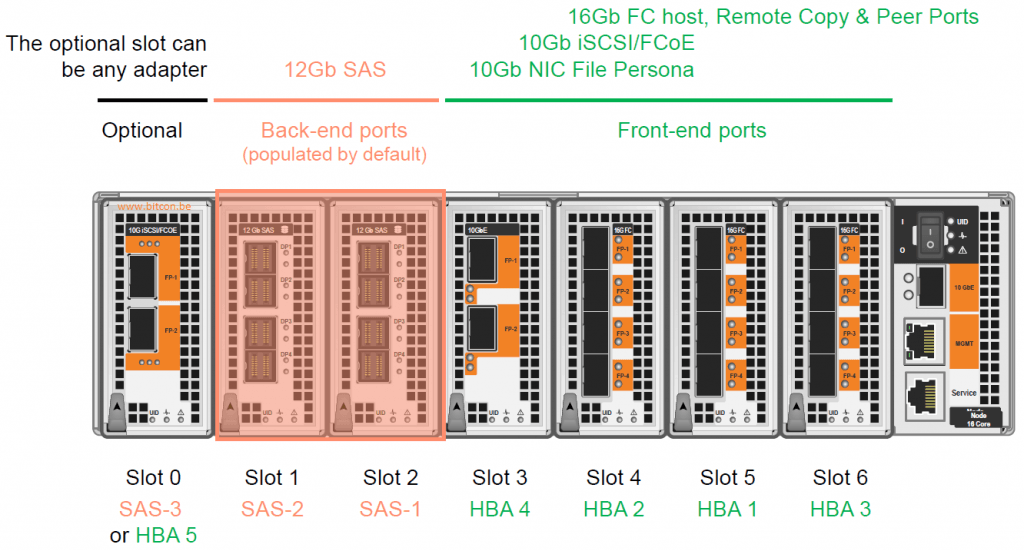
NVMe ready
An additional advantage of using this hardware is the fact that one of these cards can be a HPE 3D Cache card based on Intel Optane 3D Xpoint SSD’s. This technology was showcased at HPE Discover in London in 2016 to boost the performance of a 3PAR by using Intel Optane technology. Deploying Storage Class Memory as a caching tier provides the highest performance benefits with the lowest cost by using this new NVMe based storage.
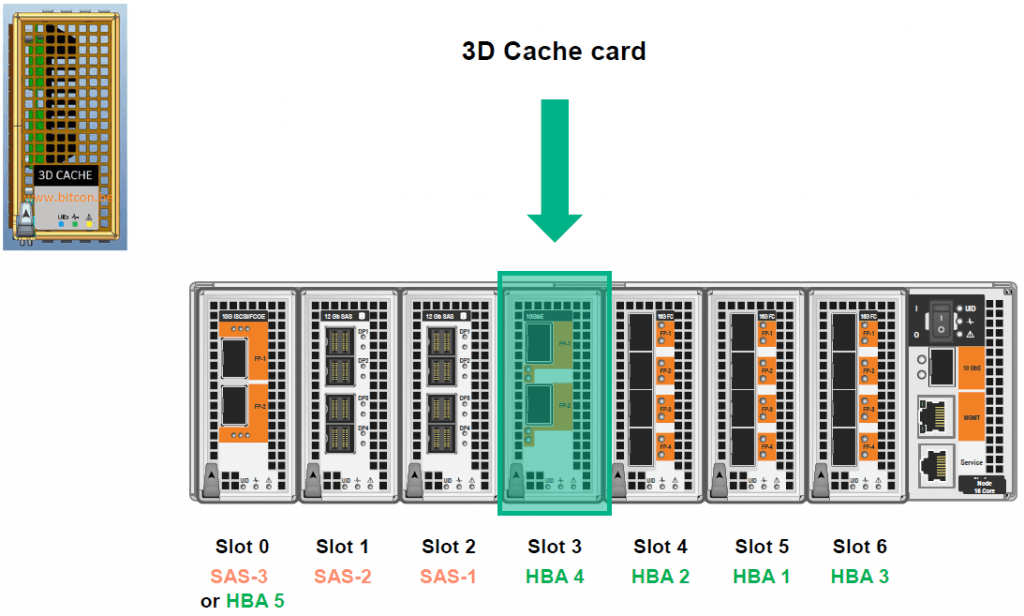
So, where will HPE be positioning these 2 AFA systems? Well it depends. The 8450 has a better density in a base rack (due to the smaller controller) and so has the best power and colling requirements which gives this solution the best in smaller capacity environments (<100TB raw). One you go above these numbers, the 9450 will be the better solution with its higher scalability and higher performance.
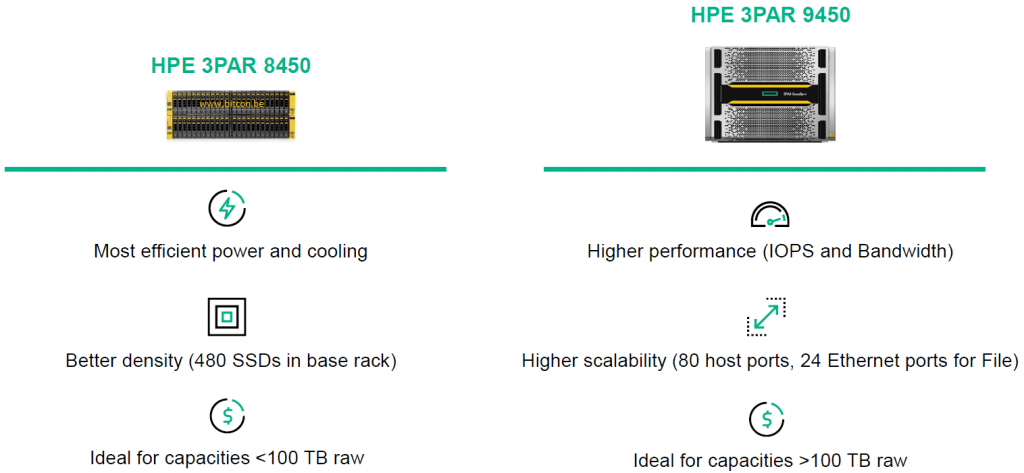
HPE 3PAR 2000 R2
Where the 9450 is a new array, the newly announced 20000 R2 systems are the same hardware compared to the 20000 first generation systems. The differences are more under the hood:
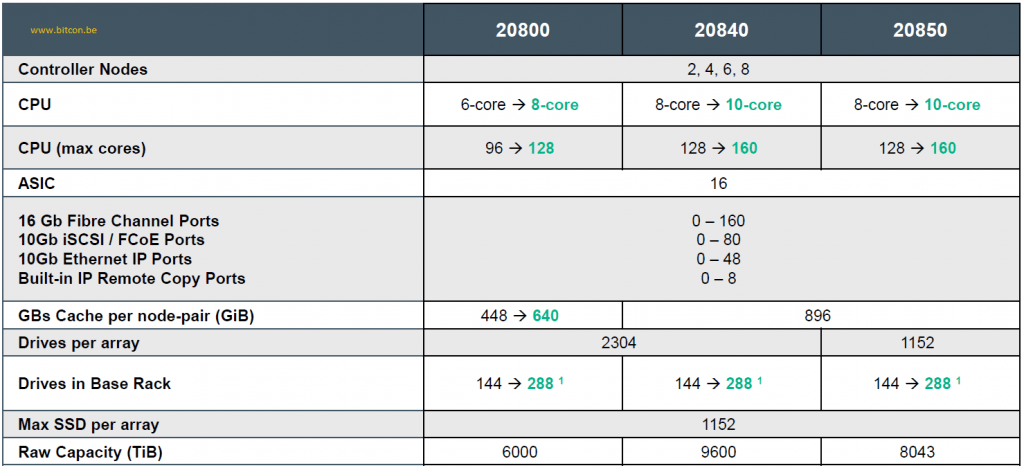
They all get more CPU cores, the 20800 gets more cache per node pair as well.
Which results in more performance. Initial numbers show a performance improvements of up to 41% depending the workload.
All other options like drives, adapters and enclosures remain the same.
Know that it is not possible to upgrade from existing 20000 systems to the new R2 models at launch. Don’t know this might change in the future.
So far about the 3PAR announcements for HPE Discover.
My good friend Calvin Zito aka HPEStorageGuy published a Blog post and a ChalkTalk video about this announcement as well with more information.
Be social and share!
